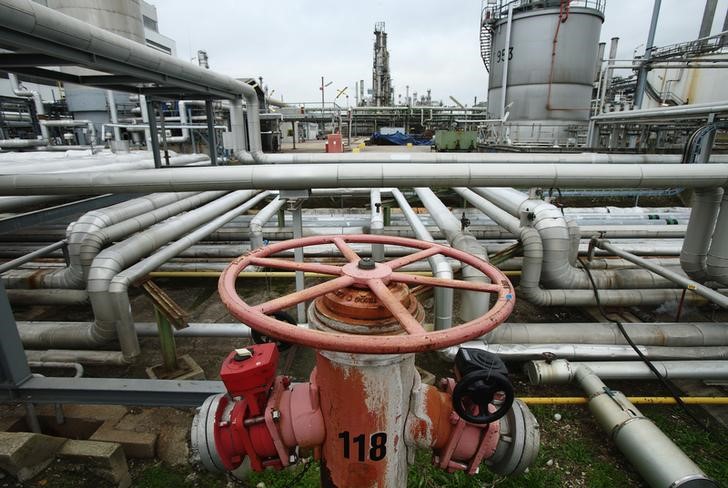Investing.com-- Oil prices rose Wednesday, as data showing a much-larger-than decline in U.S. crude supplies pointed to improving summer demand and ease worries about weakness in China.
At 14:30 ET (13:25 GMT), Brent oil futures rose 1.6% to $85.08 a barrel, while West Texas Intermediate crude futures climbed 2.6% to $82.85 a barrel.
US inventories shrink more than expected
U.S. oil inventories saw a bigger than expected draw in the week to July 12, data from the Energy information Administration showed Wednesday.
Inventories fell 4.9 million barrels, compared to expectations for a draw of 900,000 barrels.
The declined marked the third consecutive week of draws in U.S. inventories, as travel demand picked up during the summer season.
Gasoline inventories, however, rose unexpectedly by 3.3M (NYSE:MMM), while distillate stocks jumped 3.5M, compared with expectations for a draw of 1.7M barrels and 500,000 barrels, respectively.
The unexpected build in products comes as refinery activity fell to 93.7% of capacity, below 95.4% in the previous week.
Oil supply risks remain in focus
Potential supply disruptions were also in focus amid ongoing geopolitical tensions in the Middle East.
Israel continued to carry out strikes on Gaza, keeping tensions with Hamas and Hezbollah elevated. Yemeni groups were also seen carrying out repeated strikes on vessels in the Red Sea, potentially disrupting crude shipments.
This saw traders attach some risk premium to oil prices, although it remained unclear just how much of an impact the disruptions in the Middle East were having on crude.
Media reports this week showed that Russia and members of the Organization of Petroleum Exporting Countries reiterated their intentions to limit production and tighten global oil markets.
Chinese growth slows
Crude markets were nursing a sharp tumble over the past week as weak economic data from top oil importer China ramped up concerns over slowing demand.
China saw its economy grow 4.7% in the second quarter, official data showed earlier this week, the slowest growth since the first quarter of 2023, capping crude price gains.
Data last week also showed that crude imports to China fell sharply in June.
(Peter Nurse, Ambar Warrick contributed to this article.)
